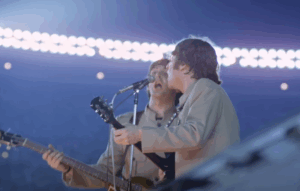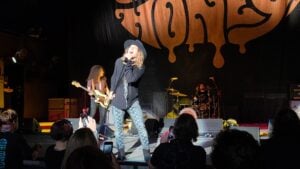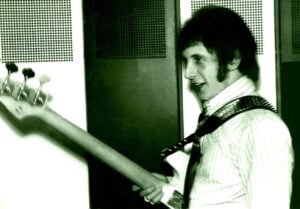4 Beatles Songs That Tell Complete and Remarkable Stories

Photo by Jimmy Baikovicius from Montevideo, Uruguay, CC BY-SA 2.0, via Wikimedia Commons
During the 1960s, listeners paid close attention to every lyric The Beatles sang. That level of engagement allowed the band to experiment freely with different songwriting styles, including the occasional narrative-driven track.
The four songs below each tell a complete story from beginning to end, demonstrating that—on top of all their other talents—the Beatles were skilled musical storytellers.
“I Saw Her Standing There”
Producer George Martin once called “I Saw Her Standing There” a “potboiler,” meaning a song that immediately captures the listener’s attention. That quality made it the perfect opening track for the band’s first U.K. album, Please Please Me. Over time, the term “potboiler” has also come to describe a gripping story, which fits this song as well. Paul McCartney quickly establishes the setting—a dance—and the central dilemma: the narrator’s hope of getting to know the girl who caught his eye. In just a few verses and a bridge, the two characters evolve from strangers into a steady couple.
“Norwegian Wood (This Bird Has Flown)”
This song marked a major artistic leap for The Beatles. Its mature subject matter abandoned the innocence of their earlier hits, and John Lennon provides only sparse details, leaving the listener to fill in the gaps. The mention of the woman’s “Norwegian wood” décor seems insignificant at first, but it becomes crucial later when Lennon implies that the narrator burns down the room after being left alone. In that sense, the song also serves as the band’s first track with a twist ending.
“Ob-La-Di, Ob-La-Da”
The White Album gave The Beatles space to experiment, and they tried several different arrangements before settling on the lightly reggae-inspired version of “Ob-La-Di, Ob-La-Da.” McCartney’s bandmates often said they felt too much effort went into shaping the song, but its storyline is a cheerful variation on the boy-meets-girl theme found in “I Saw Her Standing There.” This time, however, the narrative follows the couple into their domestic life, complete with an amusing role reversal caused by a lyric mix-up McCartney made during recording—one he decided to keep for its unexpected charm.
“Rocky Raccoon”
Like many British artists of the era, The Beatles viewed American country music with a mix of affection and amusement, often producing songs that bordered on parody. “Rocky Raccoon” fits this playful tradition. Paul McCartney creates a Western-style tale that blends tragedy with humor, such as the scene in which a drunken doctor collapses onto the table instead of helping the wounded protagonist. The cartoonish name “Rocky Raccoon” immediately signals that the story isn’t meant to be taken too seriously, yet McCartney’s writing still manages to pull listeners in enough that Rocky’s downfall feels genuinely affecting.
















